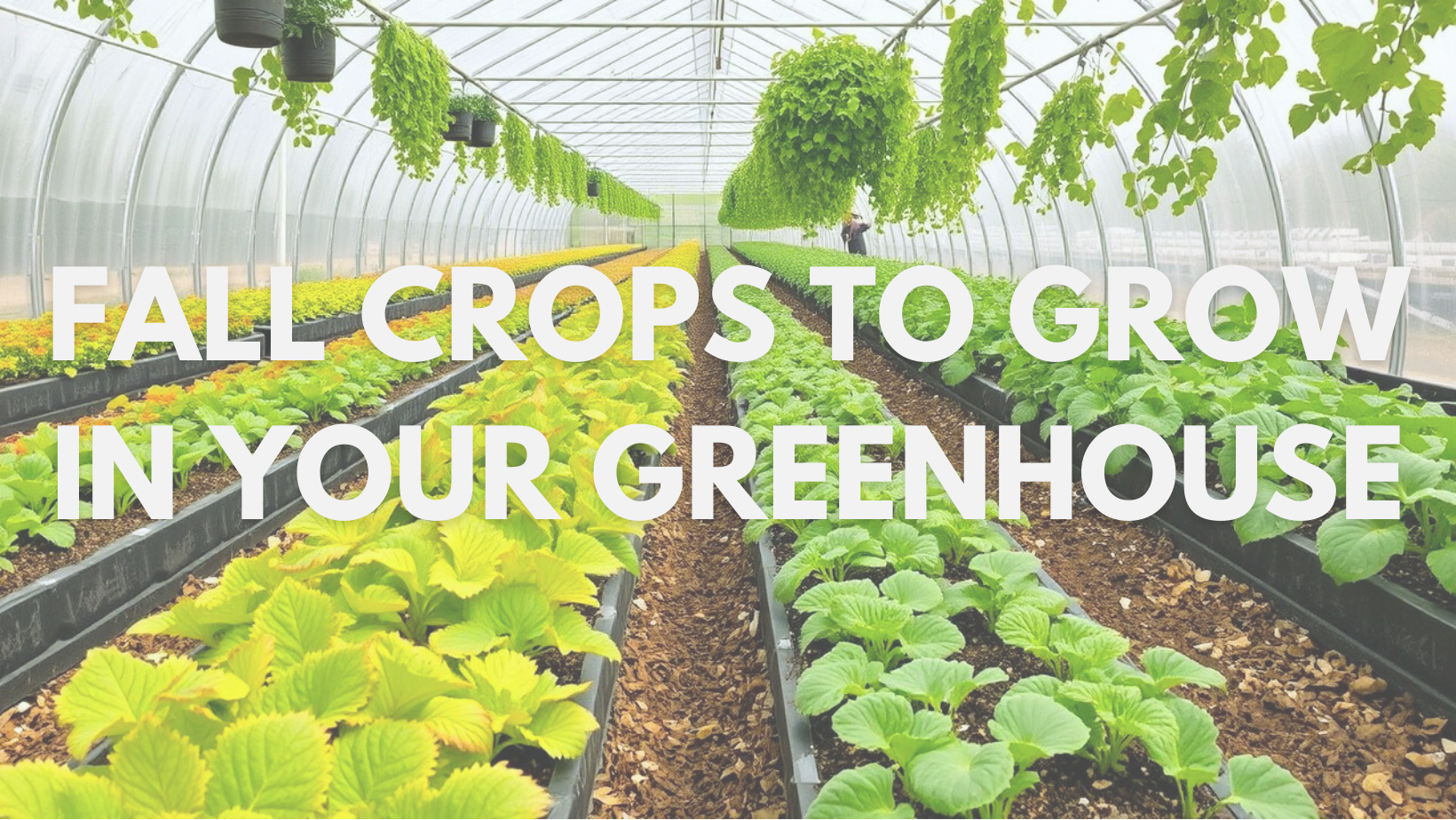As autumn approaches, many of us engage in the harvest of homegrown and allotment vegetables after a prolonged growing season. Yet, late August through early September offers an optimal window for sowing vegetable seeds destined for the fall and winter harvests. The soil retains warmth from the summer sun, allowing seeds to germinate promptly. If the weather remains mild, the growing season can extend for several additional weeks.
Moreover, utilizing a greenhouse or polytunnel can further prolong the growing season. This approach allows for rapid cultivation of crops within the same year, ensuring you can enjoy them before temperatures fall and frost arrives. If you've already harvested summer vegetables, now is the time to leverage the vacant soil.
Here are a few suggestions for cold-weather crops to cultivate in your greenhouse as we transition into autumn. May these insights inspire you to maximize your glasshouse's potential.
Fall Greenhouse Crops
Kale
Kale faces fewer pest issues compared to other brassicas. It resists diseases well and withstands cold temperatures. You can sow it in late August or early September inside your polytunnel. Like spinach, it produces leaves during the winter months. Kale prefers somewhat acidic, healthy soil, and either full sun or partial shade. Even more so, many green thumbs insist on waiting until after the first frost before cutting kale. Due to the conversion of carbohydrates into sugars when temperatures decrease, kale tends to grow sweeter as autumn and winter go. 
Arugula
To spice up your autumn salads, think about incorporating arugula into your fall harvest. This versatile green not only offers great flavor year-round, but it is also easy to cultivate. Arugula flourishes in both garden beds and containers, making it suitable for any greenhouse arrangement. Furthermore, you can plant seeds biweekly in late summer to guarantee ongoing harvests into the fall.
Beetroot
The optimal time to plant beetroot falls in early August. This timeline allows the fall vegetables to grow before the frost sets in, as they require a gentle climate for maturation. Harvest them when the leaves exhibit spotting, signaling ripeness. One of the beetroot's key advantages lies in its ability to store well throughout the winter months. Simply trim the leaves and store the roots in boxes in a cool, dark environment. Such practices ensure that the beetroot harvest remains viable until spring arrives.

Carrots
The comforting flavors of roasted root vegetables and fall stews will undoubtedly take over your taste buds when the weather becomes colder. Carrots are often cultivated in the spring and summer, but there's no bad time of year to produce this orange root vegetable. Forget about having to wait until spring to harvest carrots; not only can you seed them in the fall and have them fresh all year, but the flavor is much better. They can withstand light frosts and, in most cases, may still be picked and eaten even if the leaves have wilted.
Spinach
Spinach proves an excellent choice for fall gardening, especially for those who appreciate leafy greens. This resilient crop thrives in cooler temperatures and shorter days, infusing your meals with vibrant flavor. To achieve a bountiful autumn and winter harvest, plant spinach between late August and early October and gather the first tender leaves within weeks. Continuous leaf production will occur, provided flowers are promptly removed to prevent seeding, which can diminish leaf yield.
Broccoli
You may sow seeds or start seedlings in the fall and harvest them in 12–16 weeks. Broccoli is cold-hardy and thrives in colder weather when it can grow bigger heads without bolting, a problem that plagues many plants throughout the summer. Growing broccoli in the fall, like many other cold-weather crops, causes the starches to convert to sugars, giving the vegetable a sweeter, more improved taste. The fact that broccoli can withstand a few strong frosts means that it may be grown in a greenhouse without heating it directly.
Brussels Sprouts
Brussels sprouts, a close relative of broccoli, grace many holiday tables, prompting numerous gardeners to incorporate them into their autumn setups. While some may perceive them as finicky regarding their environment, they genuinely thrive in cooler climates. For optimal harvest within 16 to 20 weeks, plant seedlings early in the season. Ensure sturdy support for the plants by using compact soil; staking may be necessary. Sprouts develop along the main stem, maturing from the bottom upward and growing to be firm and appropriately sized.

Parsley
The fresh taste of parsley is perfect for autumnal soups and stews, and it also makes a lovely garnish. You may have to turn up the heater a little lower on the chilliest winter nights, but overall, they require a cool, frost-free environment to flourish. Several handfuls of fine horticultural gravel should be mixed with the compost to ensure that it is well-drained, as herbs require this type of soil.
Second Cropping Potatoes
These are unique strains of seed potatoes. They undergo cold storage until late summer to delay their sprouting. They are intended for sale around late August to early September, promoting quick growth in approximately 13 weeks. Chitting is generally unnecessary for these varieties, a fact familiar to potato cultivators. The soil temperature must reach a suitable level for growth. Alternatively, you can utilize a polytunnel to maintain stable temperatures or plant them in grow bags within a greenhouse.

Seasonal Gardening Tips: Useful Fall Harvesting Guide
Two important things must be considered for fall gardening to be a success: Helping plants that prefer cooler temperatures sprout and flourish amid late summer's scorching temperatures; shielding them from the few, mild frosts that hit in the autumn so they may bear fruit for a long time. Read on for specifics on how to fulfill both criteria for successfully harvesting fall vegetables.
1. Getting Fall Plants Prepared to Grow in Greenhouse
Plants requiring cooler temperatures demand additional care. One effective approach involves thoroughly watering the soil in the evening to cool it down. The next morning, place shade cloth on hoops over the bed. This setup will further reduce soil temperature. After a few days, plant seeds in the evening and give them another watering. Another effective approach is to pre-soak the seeds. Submerge them overnight in water, then refrigerate the jar for a few days, rotating it daily. Handle the germinated seeds with care during greenhouse gardening in fall. They will need consistent moisture to prevent drying out. For cold-weather crops, daily watering is crucial for the first month. Consider drip irrigation, sprinkling, or misting on days without rain.
2. Keeping Them Going
If you can successfully establish your fall crops by late September, you set the stage for a fruitful harvest. Avoid unexpected early frosts that could damage your plants. When temperatures begin to drop, place hoops over your beds. Be prepared to cover them with row covers when forecasts indicate temperatures in the 30℉.
Use sandbags or T-posts to secure the row cover in place; this will make it easier to remove during hot periods in the fall if your weather is known to be hot and cold for many weeks. If the weather turns cold and continues that way, you may cover your plants with a row cover by burying their edges in the dirt.
Even an unheated greenhouse may extend the growing season of all the autumn crops listed above by several months compared to the field. You may sow these crops in succession for a few weeks or sow more so that you can harvest them all winter long. With proper planning and maintenance, a greenhouse may produce an abundance of veggies right up to Thanksgiving.








